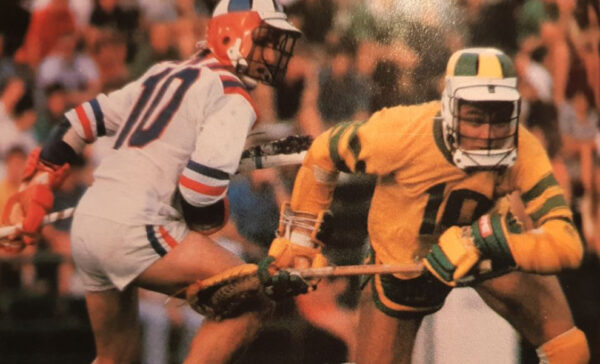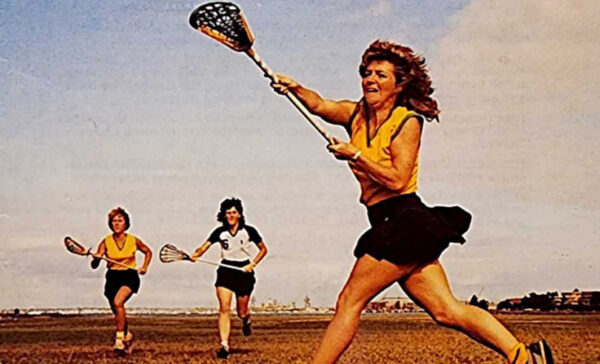By Vicki Milliken
The ‘Locals’ lacrosse competition at Williamstown’s Gloucester Reserve was the start of something big in Melbourne’s west.
“It was just organised chaos,” remembers former lacrosse champion, 66-year-old Peter Morley. In 1969, aged 12, he and a group of mates fronted up for their first game of lacrosse at Williamstown’s Gloucester Reserve. They chose a racquet from a trailer crammed with equipment, joined a team and started playing. “It was just a lot of fun,” he says.
The competition, which started in the early 1950s, was the brainchild of lacrosse stalwart Malcolm (Mal) Taylor and a critical part of the plan to rebuild the Williamstown Lacrosse Club. Known as the ‘Locals’, it would become a Saturday highlight for many kids. In time, it would lead to the club celebrating its inaugural ‘A’ grade premiership in 1963, the first of an extraordinary haul of 34 ‘A’ grade premierships from 1963 to 2023, missing out on a grand final appearance on only 9 occasions.
Growing a sporting club by developing a pipeline of junior talent is not a new strategy, but it was one that Mal committed to in spades. He would turn up at local school assemblies to promote lacrosse, which is where Peter first heard of the game. Before that, the three-time Australian representative player says, “I wouldn’t have known [about lacrosse] if it had jumped up and bit me on the leg.”
Former champion of the game and lifetime member of the club, 73-year-old Gregor (Gus) Garnsworthy remembers “[Mal] would virtually go around the streets handing out racquets to the kids to come and play. For a young bloke in primary school, it was quite intriguing.”
For the uninitiated, lacrosse is best described as a game of ‘aerial hockey.’ But unlike hockey, players are equipped with a crosse or racquet, which is a stick with a mesh pocket at the end used to catch, carry, block, pass and throw a solid rubber ball. It’s been dubbed ‘the fastest game on two feet’ because of the lightning-fast precision of the players and the speed at which the ball travels during play (over 100 kph).
Lacrosse originated as a game played by the native tribes of North America to prepare for battle and to settle disputes. Known by various names including tewaarathon (‘younger brother of war’) and baggataway (‘they hit something’), it soon captured the attention of early European missionaries and settlers. By the 1860s, the game had written rules and constituted clubs.
So, how does a game invented by indigenous communities of North America secure a foothold in a suburb on the other side of the world?
Lacrosse was introduced to Melbourne by Canadian immigrant and respected businessman, Lamberton L. Mount, who remembered watching the game with rapturous excitement as a small boy in Canada. In April 1876, he penned a letter to the Editor of the Australasian Newspaper, extolling the sport and heralding his intent to establish the Melbourne La Crosse Club. The club would play its first practice match at Albert Park in June the same year.
In 1898, the Williamstown Lacrosse Club was established. And while it’s not the only club in Melbourne’s west, it’s the oldest continuing club, having survived the loss of players to two World Wars and the financial strain of the Great Depression.
From humble beginnings, the club has nurtured a multitude of local, state, national and internationally celebrated players and coaches. Players like John Butkiewicz, who began in Mal’s ‘Locals’ competition in 1962 at the age of 11, before deciding to play closer to his home in North Altona. “It was a long [bike] ride from North Altona,” he explains.
Encouraged by Mal, John would rejoin Williamstown as a 21-year-old to further his playing career. “So, I went across to Willy in ‘72 and played my first World Series Lacrosse in ‘74,” John tells the Westsider. He is one of only two lacrosse players inducted into the Australian Sporting Hall of Fame, recognised as the leading ‘face-off’ player of his era. A face-off is a battle for the ball between two players. It occurs at the start of the game and each quarter and after a goal is scored. John’s ‘face-off’ technique, which he refined against a chair in his parents’ lounge room, is still used around the world today.

Lacrosse journeyman, 78-year-old Alec Inglis, finished his playing career and took up coaching at Williamstown at the young age of 23. “It was a daunting prospect,” he says. “I was coaching players that were a lot older than me.” After honing his skills in B grade, at age 28, Alec took over the A grade men and coached the team to six consecutive premierships from 1975 to 1980. In 1978, he was appointed assistant coach for the Australian men’s team and coach of the Australian team when it contested the World Championships in 1982 and 1984.
So strong is the lacrosse culture in Williamstown that generations from the same family appear in the annals of both the men’s and women’s clubs, the latter established in 1936.
Friendships too have been forged, many of which can be traced to the early days on the Gloucester Reserve. John insists, for all his accolades, it is the friendships that he made with those he played with and against that he’s most thankful for. “You don’t realise at the time, but it becomes a lifelong thing. You don’t just play and walk away from it,” he says.
Williamstown Women’s Lacrosse Club stalwart and former champion Colleen Hunter agrees. The five feet two-and-a-half-inch dynamo compares her experience with lacrosse to netball. “I loved netball back in the day, but you came to netball, you played, and you went home.” In lacrosse she’s found a family and friends, first at club level, then Victorian state team level, Australian team level and internationally. “It really opens up your world,” she says.
Colleen, who has played for Australia 10 times, was a member of the first Australian team ever – men or women – to be crowned World Champions against the mighty United States in 1986. Representing her country was something she never expected when she and a girlfriend gave the sport a go at age 14 years. “I loved running, and I really disliked hockey because you had to bend over the whole time.”

She’s excited about lacrosse’s inclusion in the 2028 Los Angeles Summer Olympics, the first time as a medal sport since 1908. “Imagine going to the Olympics!”
Has Williamstown a chance of being part of the Australian Olympic dream? Colleen, who now coaches, doesn’t hesitate. “Definitely.” Earlier this month her prediction took one step closer to being realised when two Williamstown women were selected to represent Australia in the 2024 World Lacrosse Women’s U20 Championship in Hong Kong. “In four years’ time … we’ll definitely get a few in,” she adds.
From little things, great things do indeed grow.

